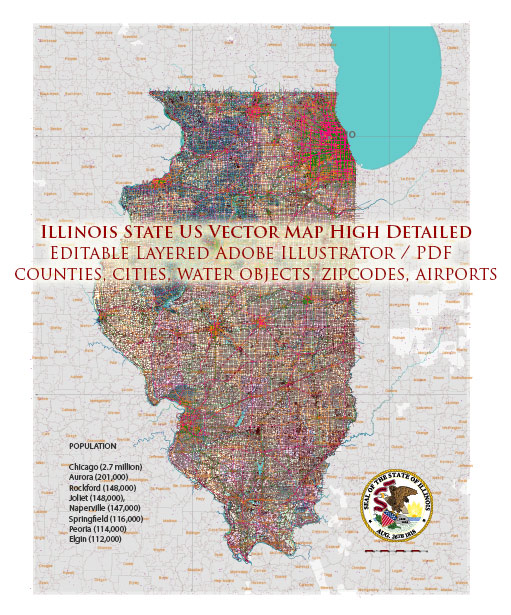Illinois is a diverse state in the Midwestern region of the United States, with a varied socio-economic landscape. Below is a brief socio-economic description of Illinois:
- Economy: Illinois has a robust and diverse economy. The state is known for its strong financial and business sectors, with Chicago being a major financial hub. The state also has a significant manufacturing base, particularly in the automotive, machinery, and food processing industries. Agriculture is another important sector, with Illinois being a leading producer of corn and soybeans.
- Employment: The state offers a wide range of job opportunities, with a mix of white-collar and blue-collar jobs. Chicago, in particular, is a major employment center with a concentration of finance, technology, healthcare, and professional services jobs.
- Income: Income levels in Illinois vary across the state. Chicago and its suburbs tend to have higher average incomes, while more rural areas may have lower average incomes. The state’s median household income is generally close to the national average.
- Education: Illinois is home to several prestigious universities and colleges, including the University of Illinois system, Northwestern University, and the University of Chicago. Access to quality education is a priority in the state.
- Healthcare: Illinois has a well-developed healthcare system, with numerous hospitals, medical centers, and clinics. The state is also home to various healthcare research institutions.
- Poverty: While the state is economically strong, there are pockets of poverty in some areas, particularly in the south and east of the state. Efforts to address poverty and income inequality are ongoing.
- Urban-Rural Divide: There is a noticeable urban-rural divide in Illinois, with urban areas like Chicago experiencing more economic development and opportunities compared to some rural areas.
- Diversity: Illinois is ethnically and racially diverse, with a significant population of African Americans, Hispanics, and Asians. This diversity contributes to the state’s socio-economic fabric.
- Transportation: Illinois has a well-developed transportation infrastructure, including major highways, railways, and airports. Chicago is a major transportation hub, serving as a central location for domestic and international travel.
- Cost of Living: The cost of living in Illinois varies significantly by region. Chicago and its suburbs tend to have a higher cost of living, while rural areas and smaller cities generally have a lower cost of living.
- Housing: The state offers a wide range of housing options, from urban apartments to suburban homes and rural properties. Housing costs are relatively moderate in many parts of the state, but Chicago can be more expensive.
- Crime: Crime rates also vary across the state, with higher crime rates in some urban areas, particularly in parts of Chicago.
- Social Services: Illinois provides a range of social services, including healthcare, education, and public assistance programs to support vulnerable populations.
It’s important to note that Illinois is a large and diverse state, and socio-economic conditions can vary significantly from one region to another. Chicago, as the largest city, has a substantial impact on the state’s overall socio-economic landscape, but it does not represent the entire state.


 Author: Kirill Shrayber, Ph.D.
Author: Kirill Shrayber, Ph.D.